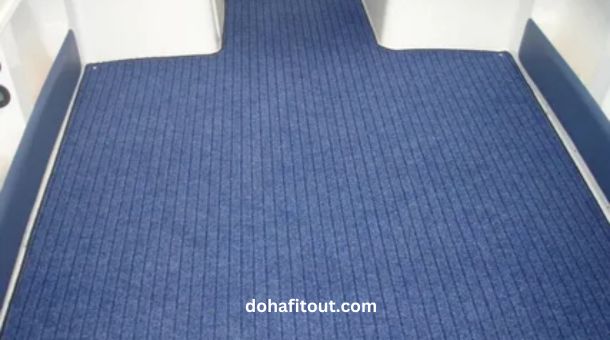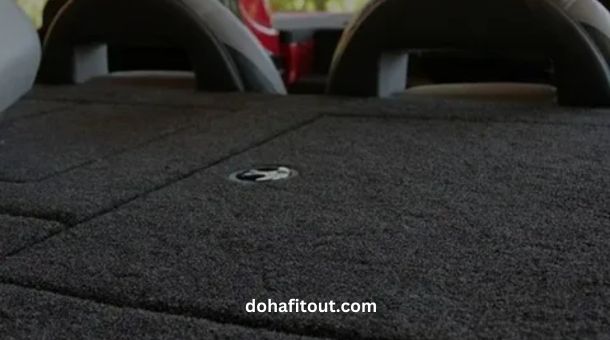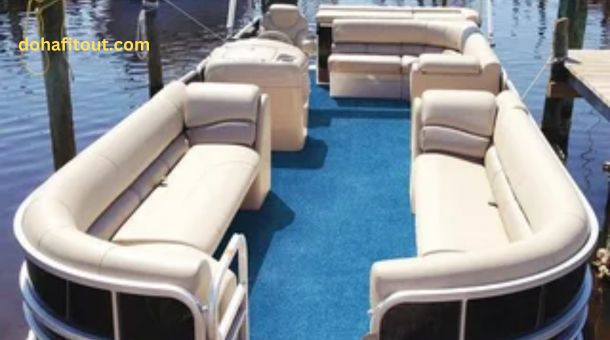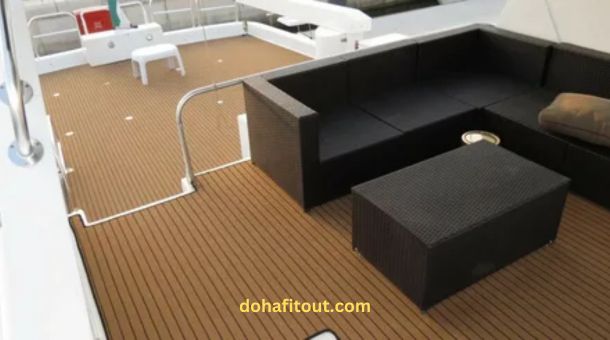Marine carpet is designed for wet and high-moisture environments such as boats, yachts, docks, and other marine applications. Unlike traditional carpets, marine carpets are made from materials that resist mould, mildew, UV rays, and the harsh conditions that boats and marine environments typically face.
One of the most important features of marine carpets is their water resistance. This characteristic ensures that the rug remains durable despite constant contact with water, whether from seawater, rain, or spills. Additionally, marine carpets often come with backing materials that help prevent water from seeping through and causing damage to the flooring or deck of the boat.

More Information Visit Now: Marine Carpet
Why Choose Marine Carpet?
Marine carpets offer several advantages over other flooring options, making them ideal for aquatic environments. Here are a few reasons why boat owners might prefer marine carpets:
- Water Resistance: Marine carpets are designed to withstand constant exposure to water without deteriorating. Their water-resistant properties prevent moisture from penetrating the fibres, avoiding mould and mildew growth.
- Durability: The materials used in marine carpets are engineered to undergo wear and tear related to aquatic activities. They can resist heavy foot site visitors and publicity to sunlight and saltwater, making them a long-lasting option.
- Safety: Marine carpets provide a non-slip surface, reducing the threat of injuries caused by slipping on wet floors. This is particularly important in a marine environment where surfaces are frequently wet and slippery.
- Comfort: Unlike hard surfaces, marine carpets offer a softer, more comfortable feel underfoot. This makes them popular for boat decks and cabins, where comfort is a priority.
- Aesthetic Appeal: Marine carpets come in various colours and designs, allowing boat owners to customize their vessels’ appearance. A marine carpet suits your style for a sleek, modern look or a more traditional nautical feel.
- Sound Insulation: The thick material of marine carpets can help reduce noise, making for a quieter and more peaceful boating experience. This is particularly useful in cabins and enclosed spaces where noise can easily echo.
Types of Marine Carpets
Marine carpets come in various styles and types to suit different applications and preferences. Understanding the different types can help you choose the right one for your vessel.
- Cut Pile Marine Carpet: Cut pile carpets are made by cutting the loops of the yarn, creating a soft, plush texture. These carpets are comfortable underfoot and provide a more luxurious feel. However, they may not be as durable as other types, making them better suited for areas with less foot traffic, such as cabins or enclosed spaces.
- Loop Pile Marine Carpet: Loop pile carpets are made from yarn looped into the backing material without being cut. This type of carpet is extremely durable and protective against wear and tear, making it perfect for high-traffic areas like decks or entryways. The loops create a firm surface that is less likely to show indentations from furniture or heavy foot traffic.
- Textured Marine Carpet: Textured marine carpets combine cut and looped fibres to create a multi-dimensional surface. This type of carpet offers both durability and comfort, making it a versatile choice for marine applications. The textured surface also helps to hide dirt and wear, making it easier to maintain.
- Berber Marine Carpet: Berber marine carpets are known for their tight weave and durability. They are immune to stains and smooth to clean, making them a practical option for boats with a lot of activity. The dense weave of Berber carpets also makes them resistant to crushing, ensuring they maintain their appearance even under heavy use.
- Vinyl Marine Carpet: Although not technically a carpet, vinyl marine flooring is an alternative to traditional carpets. It offers many of the same benefits, such as water resistance and durability, but is easier to clean and maintain. Vinyl flooring is often used in high-traffic areas with common spills and messes.

Materials Used in Marine Carpets
Marine carpets are made from synthetic materials designed to withstand the challenges of an aquatic environment. These materials offer durability, resistance to moisture, and UV protection. The most common materials used in marine carpets include:
- Polypropylene is the most common material used in marine carpets due to its excellent water resistance, durability, and affordability. Polypropylene fibres do not absorb water, making them ideal for outdoor and marine applications. They also resist stains, mould, and mildew, making maintenance easy.
- Acrylic: Acrylic is another popular material used in marine carpets. It offers a softer feel than polypropylene while providing water resistance and durability. Acrylic fibres are also UV-resistant, making them suitable for areas exposed to sunlight.
- Polyester: Polyester marine carpets offer a soft, plush feel and are often used in more luxurious settings. While they are not as water-resistant as polypropylene, they are still durable and resistant to fading from sunlight. However, there may be better choices than polyester carpets for high-traffic or wet areas.
- Nylon: Nylon is known for its strength and durability, making it a brilliant choice for excessive site visitor areas. However, nylon is less water-resistant than other materials, so it may not be ideal for areas frequently exposed to water. Despite this, nylon is often treated with water-resistant coatings to improve its performance in marine environments.
Installation of Marine Carpet
Installing marine carpet requires careful preparation and attention to detail to ensure it lasts and performs as expected. Whether you’re replacing old carpet or installing new flooring, here are some steps to follow for a successful installation:
- Preparation: Before installing the carpet, the boat’s surface must be cleaned and free of dirt, grease, or debris. The surface should also be dry to ensure that the adhesive bonds properly.
- Measuring and Cutting: Accurately degree the region where the carpet will be hooked up, considering any curves or irregular shapes. Once measured, the rug can be cut to size. It’s important to use sharp tools to ensure clean, precise cuts.
- Adhesive Application: Marine-grade adhesive is applied to the carpet backing and the boat surface. This adhesive is designed to face exposure to water and other marine conditions, ensuring a strong bond between the carpet and the surface.
- Laying the Carpet: The carpet is carefully placed once the adhesive is applied. It’s important to smooth out any wrinkles or bubbles as you go to ensure a tight, even fit.
- Trimming and Finishing: After the carpet is installed, any excess material should be trimmed, and edges should be sealed to prevent fraying. Sometimes, edging strips may create a clean, finished look.
Maintenance of Marine Carpet
While marine carpets are designed to be durable and resistant to the elements, they still require normal renovation to keep them looking and performing excellently. Here are some tips for maintaining marine carpets:
- Regular Cleaning: Vacuum the carpet regularly to remove dirt, sand, and other debris that can wear down the fibres over time. In high-traffic areas, you may need to vacuum more frequently.
- Spot Cleaning: Spills should be cleaned up immediately to prevent staining. Use a mild detergent and water to spot-clean any areas that have become soiled. Avoid harshness and damage to the carpet fibres.
- Deep Cleaning: Periodically, marine carpets should be deep cleaned using a carpet cleaner or pressure washer. Follow the manufacturer’s cleaning recommendations to avoid damaging the rug.
- Mould and Mildew Prevention: To prevent the growth of mould and mildew, ensure that the carpet is allowed to dry completely after exposure to water. Use a fan or dehumidifier to rush drying in humid or damp conditions.
- UV Protection: If your marine carpet is exposed to direct sunlight, consider using a UV protectant spray to prevent fading. Regular application of UV protectant can extend the life of your carpet and keep it looking new for longer.

FAQs for Marine Carpets
- Q: What is marine carpet?
A: Marine carpet is a specially designed type of flooring used in boats, yachts, and other watercraft. It is made from water-resistant, durable materials that can withstand publicity to moisture, UV rays, and harsh marine environments. Marine carpets are designed to resist mould, mildew, and fading, providing comfort and traction on boat surfaces.
- Q: What makes marine carpet different from regular carpet?
A: Unlike regular carpets, marine carpets are crafted from synthetic materials like polypropylene or olefin, resistant to water, mould, and mildew. They are also UV-treated to resist sun damage and fading. The backing of marine carpets is typically rubberized or made from water-resistant materials, providing a barrier to prevent water from seeping through to the floor.
- Q: Where can the marine carpet be installed?
A: Marine carpet can be installed in various areas on a boat, including:
- Decks
- Cockpits
- Cabins
- Swim platforms
- Boat trailers
It is versatile and can be used in interior and exterior watercraft spaces, depending on the type of carpet chosen.
- Q: What are the benefits of using marine carpet?
A: Marine carpets offer several advantages, such as:
- Water resistance: Prevents water absorption, mould, and mildew.
- UV protection: Helps prevent fading from sun exposure.
- Slip resistance: Provides better grip on wet surfaces, enhancing safety.
- Comfort: Soft underfoot and adds cushioning for barefoot walking.
- Noise reduction: Absorbs noise from engines and water splashing.
- Q: Can marine carpets be used for non-marine applications?
A: Marine carpets are commonly used in other settings, such as outdoor patios, pool decks, and basements. Its durability, water resistance, and UV protection make it a great choice for areas exposed to moisture or direct sunlight.
- Q: How do I clean and maintain marine carpets?
A: To maintain your marine carpet, follow these steps:
- Vacuum regularly To put off dust, sand, and debris.
- Spot clean stains: Use slight detergent and water for stains, then rinse thoroughly.
- Dry thoroughly: Always let the carpet dry completely to prevent mould growth.
- Use UV protectant: Consider applying a UV-protective spray to prevent fading from sun exposure.
- Q: How long does marine carpet last?
A: With proper maintenance, marine carpets can last anywhere from five to ten years, depending on elements like usage, exposure to the elements, and the quality of the rug. Regular cleansing and safety from UV rays can extend its lifespan.
- Q: Can I install the marine carpet myself?
A: Yes, marine carpets can be installed as a DIY project. The process involves:
- Removing any old carpet or flooring.
- Cleaning and preparing the surface.
- Applying marine-grade adhesive.
- Laying the rug and trimming any excess.
However, professional installers are recommended if you’re unsure or need a more complex installation.
- Q: How do I choose the right marine carpet for my boat?
- A: Consider the following factors when selecting marine carpet:
Material: Opt for synthetic fibres like polypropylene or olefin.
- UV resistance: Ensure it is treated for sun protection.
- Durability: Choose a thicker, more textured carpet for high-traffic areas.
- Waterproof backing: Look for rubberized or vinyl backing to prevent water seepage.
- Aesthetic: Pick a colour and pattern that matches your boat’s design.
- Q: What are the most popular types of marine carpets?
- A: Some common types of marine carpets include:
- Cut Pile: Soft and plush, ideal for cabins or interiors.
- Loop Pile: Durable and provides better traction, great for decks and cockpits.
- Textured Carpet: Combines cut and loop fibres for added style and durability.
- Vinyl Backed: Offers maximum water resistance and is easy to clean.

Conclusion
Marine carpets are a crucial component of boat flooring, offering a balance of durability, comfort, and style. Whether you’re looking to enhance safety, improve the appearance of your boat, or make the flooring more comfortable underfoot, a high-quality marine carpet can meet all of these needs.
By choosing the right type of carpet, following proper installation methods, and maintaining it regularly, you can ensure that your marine carpet will serve you well for many years, even in the challenging marine environment.
